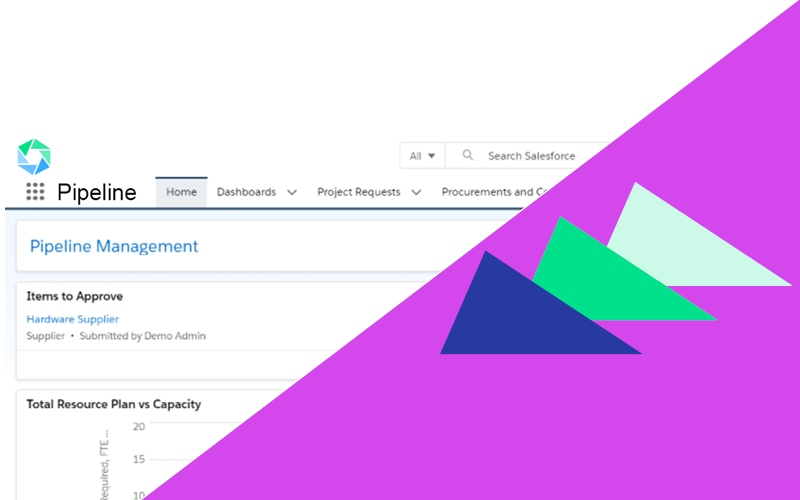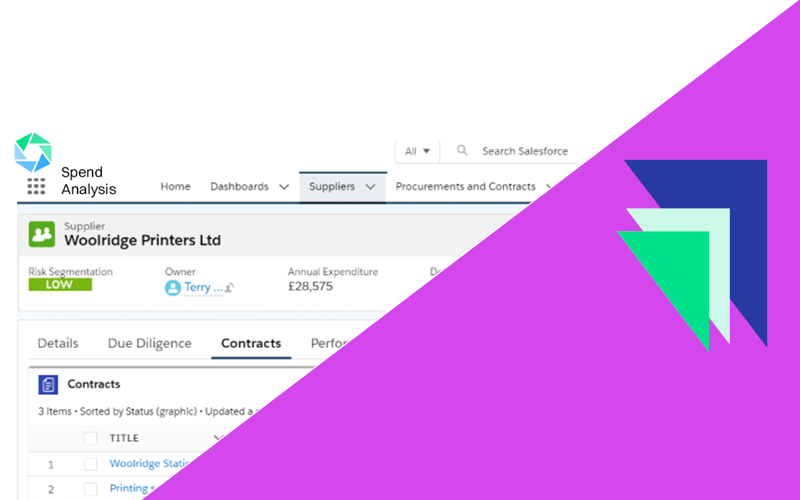Building Mutually Beneficial Relationships with Suppliers
For future-focussed organisations, success (or failure) is increasingly tied to the strength of their relationships with suppliers. To build resilience and unlock innovation, procurement teams are increasingly turning to digital solutions – and supplier relationship management tools are proving to be essential.
Supplier Relationship Management (SRM), once just a nice-to-have, is now a strategic necessity. Whether it’s ensuring supply chain resilience, driving innovation, mitigating risk or achieving sustainability goals, effective SRM can be a powerful lever for business success.
Yet, despite its recognised importance, many procurement teams find themselves a long way off their SRM ambitions. We spoke to our team about their take on the best ways to develop good, mutually beneficial relationships with your suppliers, helping you elevate your SRM strategy and, in turn, your overall business performance.
Why the Right Supplier Relationship Management Tools Matter

First, why is SRM so critical?
There are many ways SRM can impact a business’ chance of success:
- Risk Management: With closer relationships, you gain better visibility into your supply chain, allowing you to anticipate and mitigate risks more effectively.
- Cost Efficiency: Strong supplier relationships often lead to better negotiation outcomes, as well as opportunities for cost savings through collaborative efforts.
- Innovation: Suppliers can be key partners in innovation, helping you develop new products or improve existing processes.
- Sustainability: Effective SRM enables you to work closely with suppliers to ensure that your sustainability goals are met, which is crucial with the increasing focus on scope 3 emissions.
Although aware of the benefits, many procurement teams struggle to implement SRM strategies that truly maximise the value of their supplier relationships. Whether as a result of resource constraints, lack of expertise or inadequate technology, these challenges can prevent teams from achieving their SRM goals. However, by focusing on a few key practices, you can start to build stronger, more productive relationships with your suppliers.
Best Practices for Developing Strong Supplier Relationships
1. Understand Your Supplier Base
The foundation of any good SRM strategy is a deep understanding of your supplier base. This involves not only knowing who your suppliers are but also understanding their strengths, their weaknesses and how they align with your business objectives.
Segment Your Suppliers
Not all suppliers are equal and they shouldn’t be treated as such. Segment your suppliers into categories (strategic, critical and transactional) based on their importance to your business. This segmentation allows you to prioritise your efforts and allocate resources effectively, crucial for smaller or less mature teams.
Conduct Regular Assessments
Regularly evaluate your suppliers based on key performance indicators (KPIs) such as quality, delivery, innovation and cost. This will help you identify which suppliers are meeting your expectations and which may require more attention and support.
2. Build Open and Transparent Communication
Communication is the cornerstone of any strong relationship and supplier relationships are no different. Open, transparent communication helps build trust and ensures that both parties are on the same page.
Regular Meetings and Reviews
Schedule regular meetings with your key suppliers to discuss performance, upcoming projects and any challenges that may arise. These meetings should be a two-way dialogue where both parties feel comfortable sharing feedback and ideas.
Clear Expectations
Ensure that your suppliers understand your expectations and aspirations from the outset. This includes quality standards, delivery timelines and any other critical requirements. Clear expectations help avoid misunderstandings and ensure that both parties are aligned.
3. Valued Suppliers Foster Collaboration and Innovation
When suppliers feel valued and respected, they can be valuable partners in driving innovation and improving your business processes. By fostering a collaborative environment, and actually sharing your business goals with your suppliers, you can tap into their expertise and work together to achieve mutual goals.
Joint Innovation Projects
Engage your suppliers in joint development projects where their expertise can complement your own. This could involve co-developing new products, improving existing ones, or asking for their input in discussions around ways to reduce costs.
Innovation Focus
Host meetings focussed on innovation and encourage ‘out of the box’ thinking where suppliers are invited to present new ideas or technologies that could benefit your business. These meetings may help uncover new opportunities for collaboration and strengthen the relationship.
4. Invest in Technology
Technology plays a crucial role in enabling effective SRM. Without the right tools, managing supplier relationships can be a manual, time-consuming process without the visibility and insights needed to drive real value and create that single view of your supply chain. This single view is crucial when it comes to empowering your team to categorise, manage and monitor your suppliers.
The Right Software
Invest in a robust SRM software solution that provides a centralised platform for managing all supplier-related activities. This can include contract management, performance tracking and risk assessment. With the right software, you can do this all within one platform, streamlining processes, introducing integrations that enrich your data, reducing administrative burdens and gaining real-time insights into your supplier relationships.
Data Analytics
Leverage data analytics to gain a deeper understanding of your supplier performance. Analytics can help you identify trends, spot potential issues before they escalate and make informed decisions about your supplier relationships. The right software will empower you to harness your data to drive actionable insights and spot opportunities for future improvement.
5. Commit to a Long-Term Partnership Approach
The most successful supplier relationships are those that are viewed as long-term partnerships rather than short-term transactions. With the necessary controls in place to protect the business, focusing on the long-term, can help build relationships that are resilient, mutually beneficial and aligned with your strategic objectives.
Mutual Goals and Objectives
Work with your key suppliers to develop mutual goals and objectives that benefit both parties. This could include shared sustainability goals, joint cost-saving initiatives, or collaborative product development projects.
Trust and Reliability
Trust is built over time through consistent actions, communication and reliability. Ensure that you are a reliable partner to your suppliers by meeting your commitments, paying on time and supporting them when challenges arise.
6. Incorporate Sustainability into Your SRM Strategy
Sustainability continues to feature on the priority list for businesses and it’s an area where suppliers can play a crucial role. By incorporating sustainability, making it a must-have rather than a nice-to-have in your SRM strategy, you can ensure that your supply chain supports your broader environmental and social goals.
Sustainable Sourcing
Work with your suppliers to ensure that the products and materials you source are sustainable and meet any relevant environmental standards. This could involve using recycled materials, reducing waste or sourcing from ethical suppliers.
Supply Chain Transparency
Encourage your suppliers to be transparent about their own supply chains. This transparency can help you identify potential risks, such as unethical labour practices or environmental concerns, and take action to address them. By treating your suppliers’ value chain as a part of your own, you make meeting scope 3 goals much more achievable.
7. Measure and Continuously Improve
SRM is not a set-it-and-forget-it strategy. It requires continuous measurement and improvement. By regularly reviewing your SRM practices and staying on top of SLA commitments and performance, you can ensure that your supplier relationships continue to deliver value over time.
Regular Audits and Reviews
Conduct regular audits and reviews of your SRM strategy to assess its effectiveness. This could involve reviewing supplier performance data, conducting feedback surveys with your suppliers and internal team or benchmarking against industry standards.
Feedback Loops
Establish feedback loops where both you and your suppliers can provide open feedback on the relationship. This feedback can help identify areas for improvement and ensure that both parties are satisfied with the partnership.
Conclusion
Strong supplier relationships are more important than ever. A robust SRM strategy not only helps you manage these relationships effectively but also positions procurement as a strategic partner within your organisation.
By investing in supplier relationship management tools, your key supplier relationships, you can elevate your SRM strategy and, in turn, your overall business performance.
Technology, particularly procurement software solutions, is the key to unlocking the full potential of your SRM strategy. The right tools can provide the visibility, automation and insights needed to manage supplier relationships more effectively and drive continuous improvement.
Ready to transform your supplier relationships?
Learn more about our Contract & Supplier software solution

Ready to empower your team with a procurement software solution you can rely on?
Request a demo today and discover the difference Atamis can make for your team and your procurement processes.
 Our Pipeline App empowers your team to plan ahead and forecast for upcoming procurement activities.
Our Pipeline App empowers your team to plan ahead and forecast for upcoming procurement activities.  The Tender App allows your team to visualise all sourcing activities within your Atamis platform, from issuing tenders to receiving bids.
The Tender App allows your team to visualise all sourcing activities within your Atamis platform, from issuing tenders to receiving bids. Our Contract & Supplier App puts your team in firm control of your key supplier relationships and provides a central repository for all contracts.
Our Contract & Supplier App puts your team in firm control of your key supplier relationships and provides a central repository for all contracts.  Our Enhancers ensure your solution is tailored to your needs. Pick and choose additional functionality that fits your requirements.
Our Enhancers ensure your solution is tailored to your needs. Pick and choose additional functionality that fits your requirements. 



